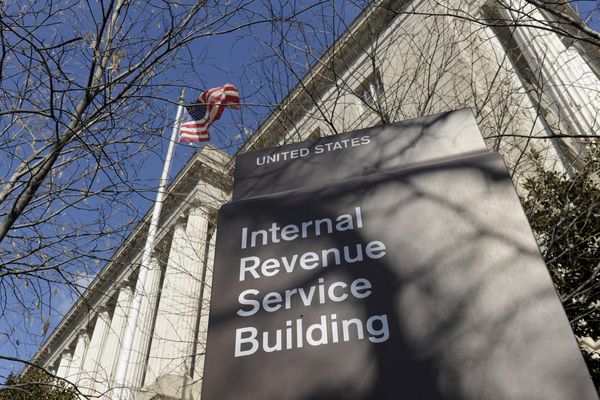The Supreme Court's decision rejecting the Occupational Safety and Health Administration's emergency vax-or-test mandate showed that a majority of the Supreme Court is skeptical of broad, unprecedented assertions of agency authority. Although the Court could have chosen to invalidate the OSHA rule on more narrow statutory grounds, the brief per curiam swept more broadly. The Court did not fully eviscerate OSHA's ability to reduce the workplace risks of Covid-19 (loud claims to the contrary notwithstanding), but it did adopt a relatively narrow view of an agency's delegated authority, curtailing OSHA's ability to address Covid-19 on the margin, and suggesting broader shifts within administrative law may be on the way.
Insofar as the Court's decision rested on a "major questions" rationale -- the idea that broad agency authority must be expressly authorized by Congress -- it would seem to spell bad news for the EPA in the greenhouse gas regulation case to be heard next month. If a majority of the Court concluded that OSHA could not impose a vax-or-test requirement on all large employers as an emergency occupational health standard, it is unlikely to conclude that the EPA's authority to control emissions from power plants allows it to mandate broader changes within energy systems. Indeed, the major questions doctrine (as applied by the current Court) seems tailor made for West Virginia v. EPA. But NFIB v. OSHA may have even broader consequences for future regulatory efforts to control greenhouse gases.
Both the oral argument and per curiam opinion in NFIB v. OSHA suggested that at least some justices (and the Chief Justice in particular) were concerned that the Biden Administration was using OSHA"s authority over workplace safety as a means of pursuing the broader (and worthwhile) public health goal of increasing Covid-19 vaccinations. In effect, as Michael Dorf hypothesized, the Court was concerned about "pretext." As Dorf put it "the OSHA ruling reflects a judgment by the majority of the Court that President Biden and his administration were using their power under [the OSH Act] pretextually." Lacking any clear statutory authority to impose a nationwide Covid-19 vaccination requirement, the Biden Administration sought to use the OSHA rule as part of (what the President described as) "a new plan to require more Americans to be vaccinated."
Concern for pretext is common in administrative law, but the rule against is rarely enforced with much vigor. Provided that an agency can offer a reasoned explanation of its actions and justify the choices it made in terms aligned with its statutory authority, that is usually good enough to survive judicial review. In the census case, however, Chief Roberts suggested courts should look more closely when there is reason to suspect an agency's explanation is "contrived." What judicial review requires, Roberts explained, is that agencies provide "genuine justifications for important decisions," and not "distractions" or subterfuge. While the gap between the agency's action and apparent intent was not nearly as great here as in the census litigation, the Court was clearly concerned that the OSHA ETS was not driven by a concern with occupational safety, as such, but a broader imperative to increase vaccination. Contra Dorf, the "mismatch" between the OSHA rule and the risk posed by Covid-19 in the workplace -- which was based upon the number of people on a company's payroll, and not any relevant attributes of governed workplaces -- reinforced that conclusion.
Whereas pretext analysis is often used to ferret truly nefarious motives, such as racial or religious discrimination, here it reinforces the Court's apparent concern that agencies only exercise that authority they have been delegated. (And while some might think the Court used such analysis in the Census case due to concerns about invidious discrimination, that is not the rationale the Chief Justice gave.)
OSHA's authority concerns occupational health and safety, the Court noted repeatedly, and not public health more broadly. Thus insofar as the Court had reason to suspect the regulation was not adopted with a focus on occupational health and safety, that was more reason to question whether the agency was exercising power Congress had actually authorized. (Again, one can see the Chief raising such concerns at oral argument.)
What does this have to do with climate change regulation? If the message of NFIB v. OSHA is that courts should be sure that agencies are exercising the powers given by Congress for the purposes Congress gave them, then not only is the Court likely to conclude that the EPA's authority to use section 111 to reduce greenhouse gas emissions from the power sector is limited. It is also likely to be suspicious of EPA efforts to repurpose other pre-existing authorities to regulate air pollution to achieve GHG reductions.
Absent new legislation, the most direct way the EPA has to reduce GHG emissions is to tighten existing regulations on coal plants and other substantial sources of GHG emissions. Tightening the national ambient air quality standard for particulate matter, for example, would not only reduce soot and fine particles in the air. It would also put the squeeze on large sources of GHGs, reducing those emissions as a co-benefit. The problem for EPA would be if courts see such efforts as work-arounds, as they did with the OSHA ETS.
I do not see these concerns as necessary fatal to further EPA climate efforts, but it is another obstacle with which the agency will have to contend (as if there were not enough already). All the more reason it would be a good thing for Congress to enact a carbon tax.
The post Why the Supreme Court's Decision in NFIB v. OSHA May Be Even Worse News for Climate Regulation than You Thought appeared first on Reason.com.







